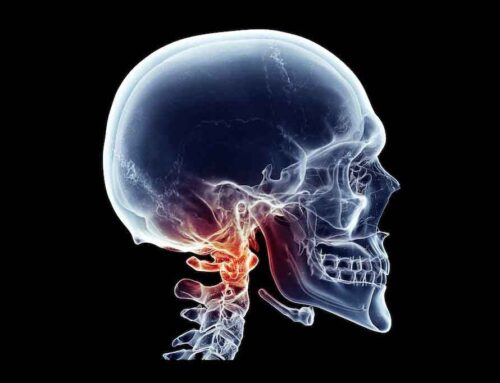Most people have witness someone crack their neck, and a lot of people crack their own neck for relief. More often than not this type of neck cracking is done in order to loosen up the feeling of a stiff neck, similar to cracking the knuckles of your hands.
Is it safe to crack your own neck?
Neck cracking is a bad habit that a lot of people develop in order to feel less stiff. Just like most bad habits, it starts out slowly but then becomes an unconscious behavior that you do without even thinking about it. Some patients have reported that they crack their own neck up to 10 times per day out of habit.
The way that most people will crack their own neck is to twist as far as they can go and then apply an extra “twist” at the end. Typically they’ll do so in order to feel less pain, improved range of motion, or to release tension. However, the short term relief that is achieved comes with risks. The cervical spine is a very important part of the spine and is required to hold the weight of the head (8-13 pounds) in balance above the shoulders. This balancing act requires structural stability provided by the joints, discs, and ligaments of the neck. People who engage in neck cracking slowly loosen the ligaments that support the neck causing increased instability and further problems over time.
One key point to consider is the non-specific nature of a self-manipulation (cracking your own neck). It is nearly impossible to target the precise area where the sensation of stiffness is coming from. This means that not only are you not fixing the problem, but it is likely that you are causing a new problem as well. The uncinated processes of the cervical vertebrae are the part of the neck bones that are worn down by cracking your own neck. This is particularly relevant in the spines of children and teenagers who are still developing.
Is it safe for a chiropractor to crack your neck?
Many individuals are familiar with conventional chiropractic manipulation. This is the type of spinal adjustment that causes a twisting, popping, and cracking in the neck. This type of mobilization is not unique to chiropractic, and many physical therapists and osteopaths perform these maneuvers as well.
Safely is a concern for many people when it comes to neck adjustments. The neck has several important structures that need to be protected from overly aggressive neck cracking including the vertebral arteries, internal carotid arteries, and the spinal cord and nerves. Self-manipulation or generalized manipulation may create unnecessary strain in these tissues while attempting to achieve relief.
Chiropractors are uniquely trained to evaluate for situations that require safe and conservative neck adjustments. This means that any type of adjustments that need to be performed in this part of the spine should only be done so by a trained professional when absolutely necessary. It is important to remember that not all chiropractors do their adjustments in this manner. There are alternatives to neck cracking that allow patients to achieve the relief from neck pain and tension with no risk of injury to the structures of the neck.
Blair Upper Cervical chiropractors are trained in precise, gentle, and effective means for correcting the cervical spine. This unique chiropractic approach involves no neck cracking, which means that the stability of the cervical spine can be maintained and improved rather than compromised.
What alternatives are there to neck cracking?
For many people, neck cracking is simply a way to achieve some sort of relief with nagging neck pain, tension, or stiffness. The important point to make here is that neck cracking and chiropractic adjustments are not the same thing. Blair Upper Cervical chiropractic is a system that can be used to identify and correct the underlying cause of symptoms such as neck pain and stiffness. Many patients who have worked with Blair Upper Cervical chiropractors find that as their condition stabilizes, the urge or need to crack their neck goes away on its own.
When the constant feeling of stiffness subsides, the urge and habit of neck cracking can be unlearned and the long term structural integrity of the cervical spine improves.
If you are the type of person who uses neck cracking for temporary relief, this patient’s story may resonate with you.
A male patient in his mid-20’s reported to a Blair Upper Cervical chiropractor complaining of neck pain, headaches, brain fog, and a host of other symptoms. Upon questioning it was discovered that this young man cracked his own neck constantly throughout the day. He found that over time his condition worsened causing him to seek professional help.
A comprehensive evaluation found that this young patient’s symptoms were caused by a displacement in the alignment of the upper cervical spine. Over the course of several months and only a handful of Blair Upper Cervical adjustments, this patient reported that not only did the neck pain, brain fog, and headaches improve but he also found that he no longer felt the urge to crack his neck. He also reported that his head felt “lighter”, his neck motion felt “freer” and the “crunchy, gravely” noises that would occur when he moved his head and neck around went away. This all resulted as a byproduct of improved alignment and stability.
Blair upper cervical chiropractors are practicing all over the world in order to help patients find lasting relief, improved stability, and an alternative to the unsafe practice of neck cracking.



